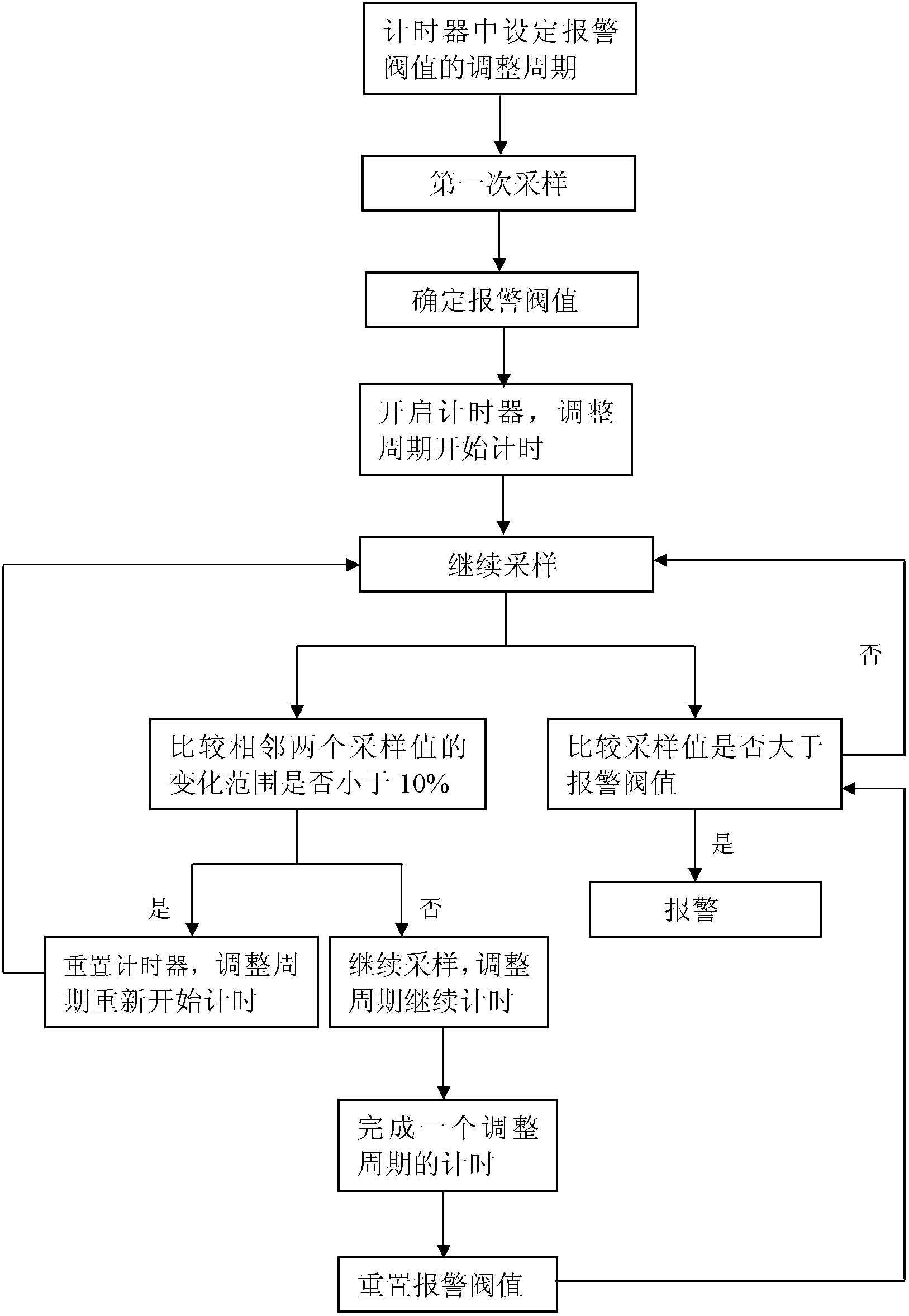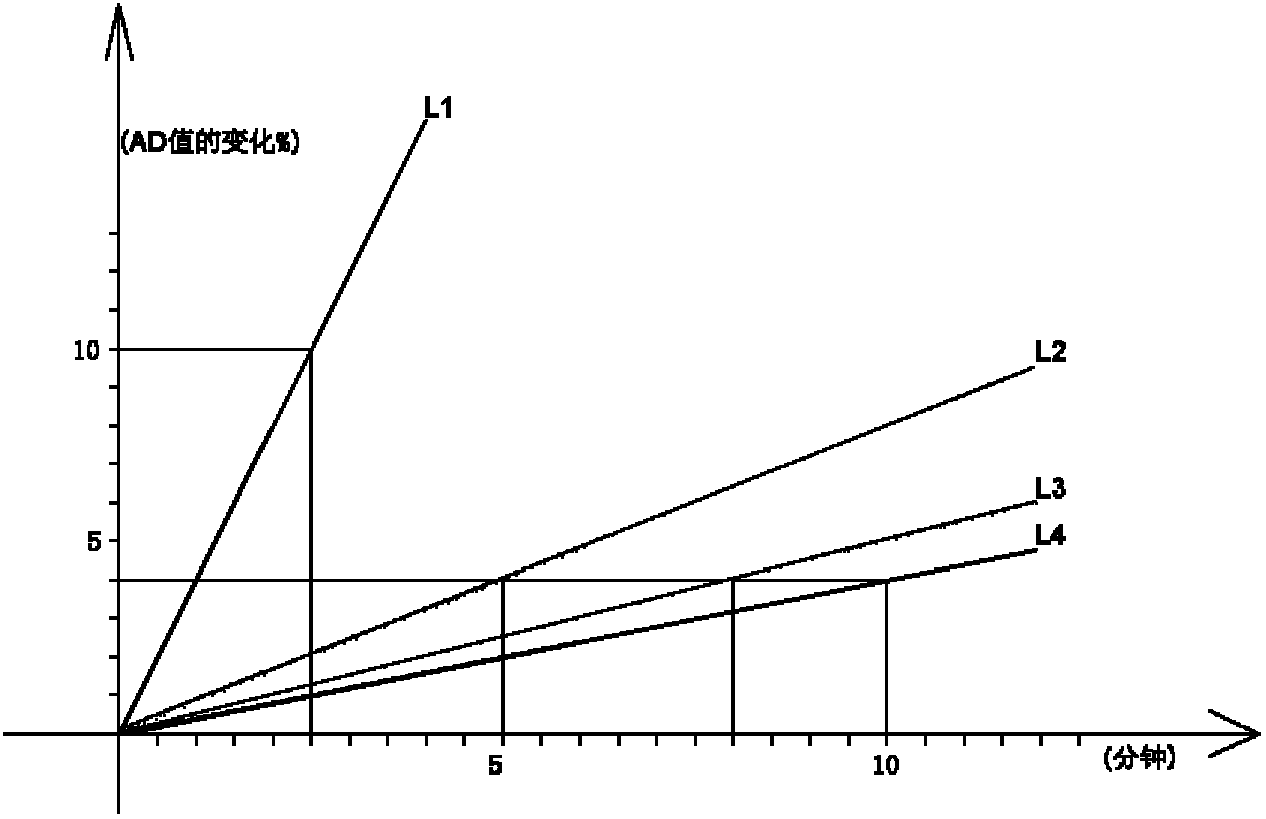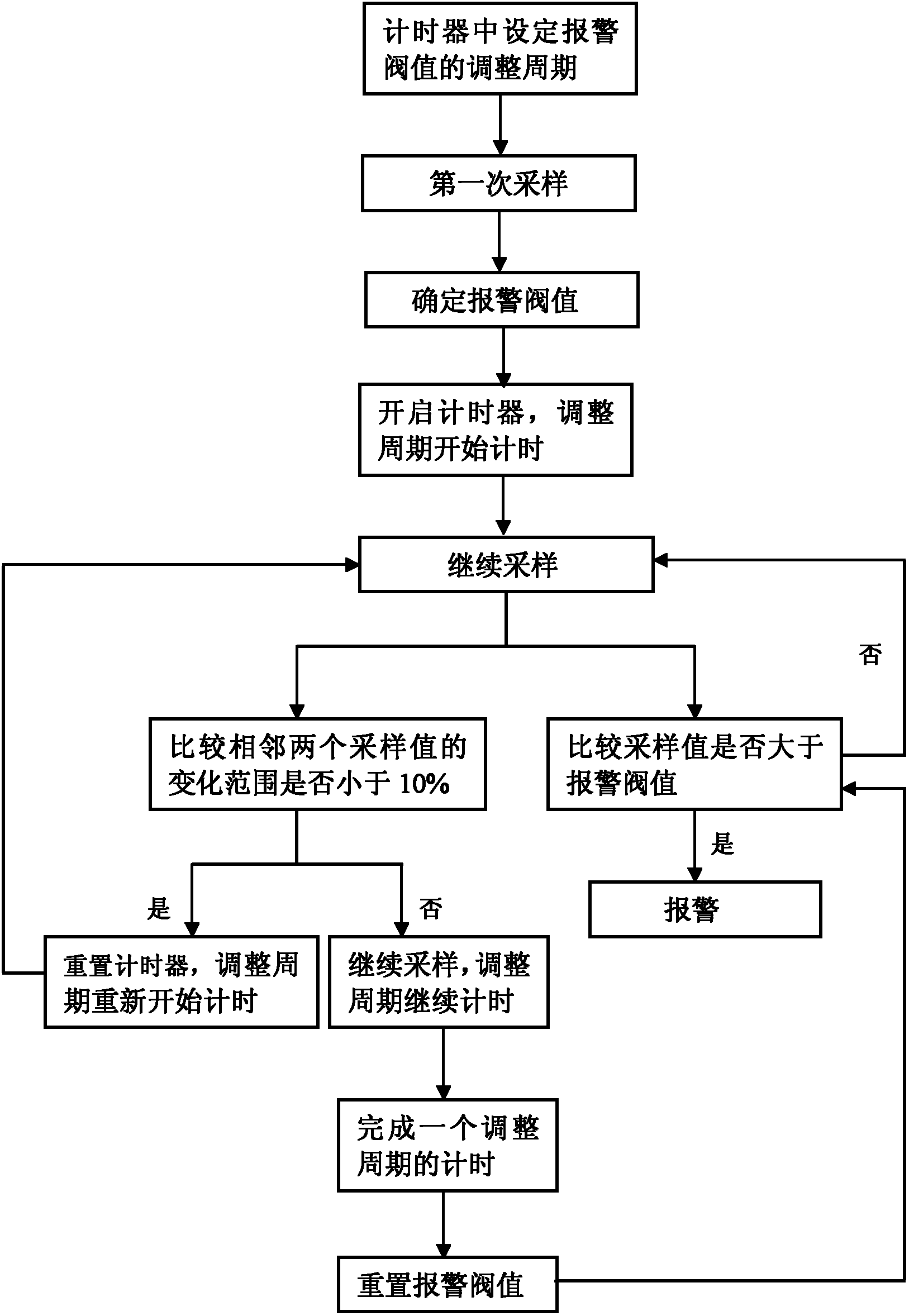Alarming method of adaptive smoke alarm
A smoke alarm, self-adaptive technology, applied in the direction of fire alarms relying on the effect of smoke/gas, can solve the problems of property loss, casualties, missed timing of controlling the fire source, etc., to overcome the influence of sensitivity, high The effect of sensitivity
- Summary
- Abstract
- Description
- Claims
- Application Information
AI Technical Summary
Problems solved by technology
Method used
Image
Examples
Embodiment 1
[0022] Embodiment 1: an alarm method for an adaptive smoke alarm, comprising the following steps:
[0023] (1) Set the adjustment period of the alarm threshold in the timer as 2 minutes; the rate of change is set at 4%.
[0024] (2) Sampling the smoke concentration for the first time, and converting the sampled smoke concentration into a corresponding digital signal value (AD sampling value) of 140, and determining the initial alarm threshold value of 155 according to the digital signal value;
[0025] (3) Turn on the timer, the adjustment period of the alarm threshold starts timing, and at the same time continue sampling and compare the sampled value with the alarm threshold 155: if the sampled value is greater than the alarm threshold 155, the control alarm module sends an alarm; if the sampled value If it is less than the alarm threshold 155, continue sampling and determine whether the variation range between two adjacent sampling values is less than 4%. The sampling val...
Embodiment 2
[0026] Embodiment 2: An alarm method for an adaptive smoke alarm, comprising the following steps:
[0027] (1) Set the adjustment cycle of the alarm threshold in the timer as 10 minutes, and the change rate as 8%.
[0028] (2) Sampling the smoke concentration for the first time, converting the sampled smoke concentration into a corresponding digital signal value of 180, and determining the initial alarm threshold value of 205 according to the digital signal value;
[0029] (3) Turn on the timer, the adjustment period of the alarm threshold starts timing, and at the same time continue to sample and compare the sampled value with the alarm threshold 205: if the sampled value is greater than the alarm threshold 205, the control alarm module sends an alarm; if the sampled value If it is less than the alarm threshold 205, continue sampling and determine whether the variation range between two adjacent sampling values is less than 8%. If the sub-sampling value is 188, it will be ...
Embodiment 3
[0030] Embodiment three: an alarm method for an adaptive smoke alarm, comprising the following steps:
[0031] (1) Set the adjustment cycle of the alarm threshold in the timer to 8 minutes;
[0032] (2) Sampling the smoke concentration for the first time, converting the sampled smoke concentration into a corresponding digital signal value of 100, and determining the initial alarm threshold value of 130 according to the digital signal value;
[0033] (3) Turn on the timer, the adjustment period of the alarm threshold starts timing, and at the same time continue to sample and compare the sampled value with the alarm threshold 130: if the sampled value is greater than the alarm threshold 130, the control alarm module sends an alarm; if the sampled value If it is less than the alarm threshold 130, continue sampling, and determine whether the range of variation between two adjacent sampling values is less than 10%, if yes, the timer continues timing, and sampling continues, if no...
PUM
 Login to View More
Login to View More Abstract
Description
Claims
Application Information
 Login to View More
Login to View More - R&D
- Intellectual Property
- Life Sciences
- Materials
- Tech Scout
- Unparalleled Data Quality
- Higher Quality Content
- 60% Fewer Hallucinations
Browse by: Latest US Patents, China's latest patents, Technical Efficacy Thesaurus, Application Domain, Technology Topic, Popular Technical Reports.
© 2025 PatSnap. All rights reserved.Legal|Privacy policy|Modern Slavery Act Transparency Statement|Sitemap|About US| Contact US: help@patsnap.com



